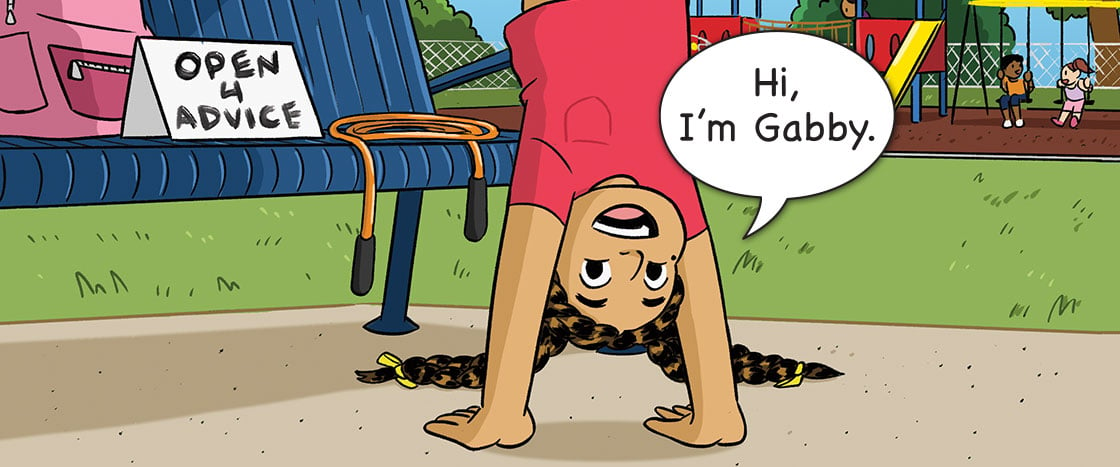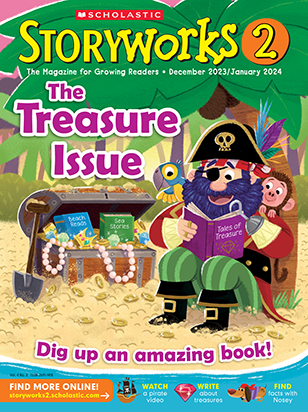
Shannon Wright
Lexiles: GN470L
Guided Reading Level: J
DRA Level: 16-18
Topic:
Social-emotional learning,
Standards
About the Story
ELA Focus
Features of graphic novels
Casel Social-Emotional Learning Focus
Relationship skills: Resolving conflicts constructively
Vocabulary
advice, solve
Step-by-Step Lesson Plan
1. BEFORE READING
Watch the Video (10 minutes)
“What’s in a Comic?”
- This video teaches kids about the features of a comic.
- Before watching, tell kids to look out for four features they might find in a comic.
- After watching, ask for kids’ help to fill out a list of comic features on chart paper. The features mentioned in the video are: panels, speech bubbles, thought bubbles, and onomatopoeia.
- Tell kids to look for those features in the mini graphic novel. They can fill in our “Comic Features Hunt” skills sheet after reading.
Set a Purpose for Reading (5 minutes)
- Open your magazines to “Gabby Solves: The Tag Problem.” Ask kids: What kind of story is this? (a comic, or a mini graphic novel)
- Next, read the Think and Read prompt on page 13: “As you read, ask yourself: How could Ryah have spoken up for herself? Encourage children to think about this prompt as they read.
2. READ THE STORY (10-15 MINUTES)
- Kids can read this story individually, in small groups, or as a class.
- As they read, ask kids to note who is being a good friend and when.
3. AFTER READING
Assessment: Quiz (10 minutes)
- Pass out the quiz to assess comprehension of the article.
- We also offer a lower-level quiz.
- Both quizzes are now available in multiple-choice and written-answer formats.
ELA/SEL Focus: Dear Gabby
- Kids can write Gabby a letter about a question they would like her advice about. Then they can pretend to be Gabby and write the solution!
ELA Focus: Comic Features Hunt (10 minutes)
- Pass out the Comic Feature Hunt printable.
- Kids can use the mini graphic novel to fill it out and learn about the different features of comics/graphic novels.
Extend the Story With an Activity (20 minutes)
- Kids can finish the story with the “Finish the Story” printable. They’ll draw and write what they believe happens after the story ends.
- This activity gives kids practice in the skill of making inferences.
Enrich the Learning: NEW! Special Lesson for Independent Learning at Home (30-40 minutes)
- We created a brand-new resource to make it easy for your students to do an independent lesson at home with the Mini Graphic Novel.
- Look in your Resources section for the “Slide Lesson.” It’s a self-contained group of slides that walk your students through the Mini Graphic Novel.
- This easy-to-use group of Google Slides walks your students through watching the video “What’s in a Comic?” This video teachers the features of a comic. Then, kids respond to the video, read the story independently, answer three questions after reading, and hunt for features of a comic in the text.
- It’s a simple way to take the resources we have already created and put them in one place so you don’t have to create anything new!
Text-to-Speech
